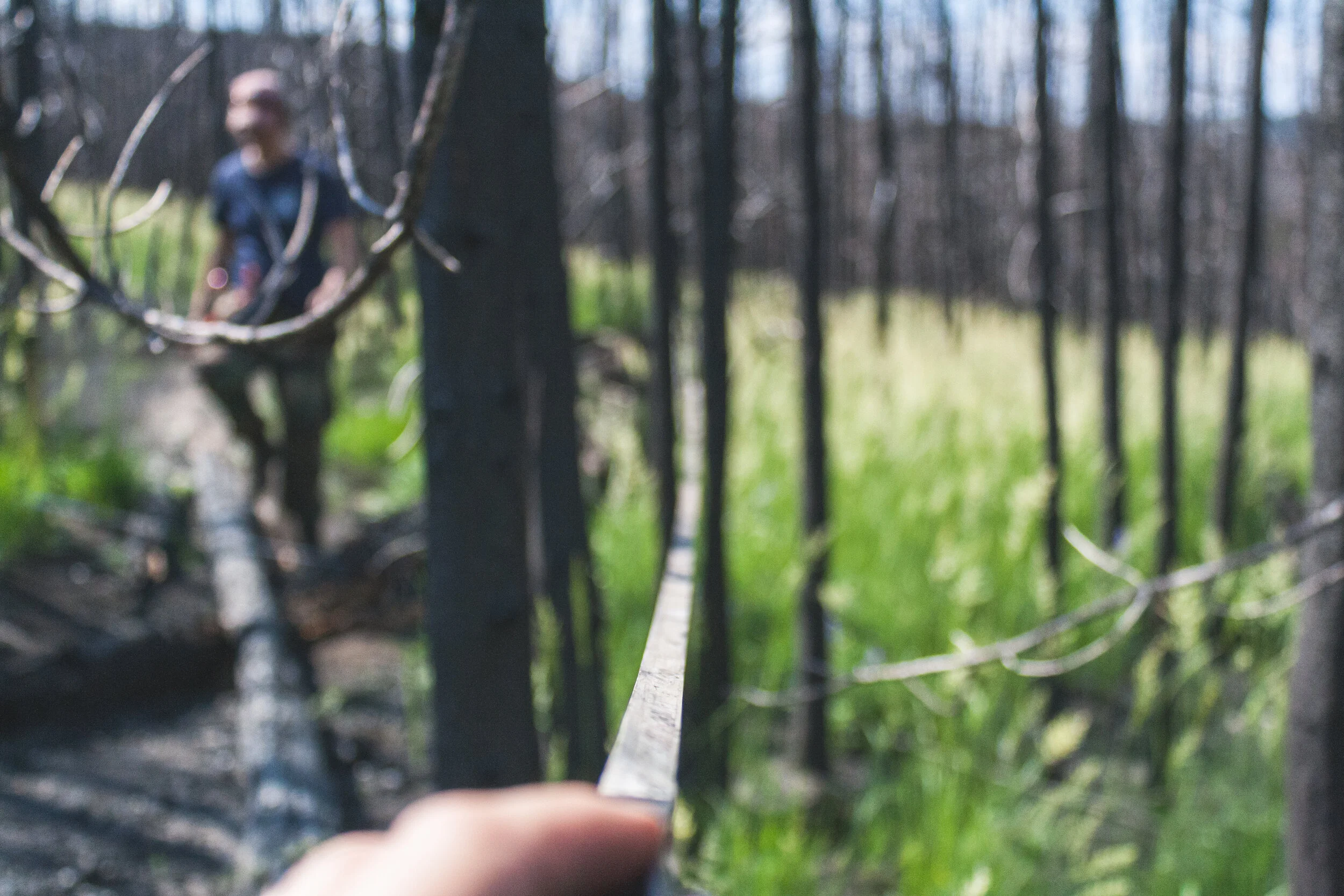Research
Causes of ecological change
Many interacting fine-scale processes such as seedling establishment, tree hydraulics, photosynthesis, and mortality aggregate to shape how forests are affected by changing climate and disturbance at broader scales. As a result, accurate projections of future forest dynamics will require that we identify the most important of these fine-scale processes and explicitly represent them in models. Our lab intimately pairs experiments and state-of-the-art simulation models to identify the fine-scale processes that are most likely to underpin global forest change and to develop a mechanistic understanding of how key processes operate under historical and future conditions.
Hansen, W.D., R. Fitzsimmons, J. Olnes, and A.P. Williams. 2021. An alternate vegetation type proves resilient and persists for decades following forest conversion in the North American boreal biome. Journal of Ecology, 109: 85-98.
Hansen, W.D., and M.G. Turner. 2019. Origins of abrupt change? Postfire subalpine conifer regeneration declines nonlinearly with warming and drying. Ecological Monographs, 89: e01340.
Hansen, W.D., K.H. Braziunas, W. Rammer, R. Seidl, and M.G. Turner. 2018. It takes a few to tango. Changing climate and fire can cause regeneration failure in two subalpine conifers. Ecology, 99:966-977.
Projecting forest landscape dynamics
While mechanistic understanding of the processes that underpin forest change are important, human wellbeing primarily depends on services provisioned in landscapes. Thus, understanding where and why future landscape changes will occur are among the biggest challenges facing ecologists today. One of our goals in the Forest Futures Lab is to advance theory on how cross-scale interactions shape forest-landscape trajectories. We combine remote sensing, experiments, and process-based modeling to characterize how and why forest landscapes have changed in the past, project how forest landscapes may change in the future, and evaluate potential approaches for people to steward forest landscapes toward more sustainable trajectories.
Rammer, W., K. Braziunas, W.D. Hansen, Z. Ratajczak, A. Westerling, M.G. Turner, and R. Seidl. 2021. Widespread regeneration failure in forests of Greater Yellowstone under scenarios of future climate and fire. Global Change Biology, 27: 4339-4351.
Turner, M.G., K.H., Braziunas, W.D. Hansen, T.J. Hoecker, W. Rammer, Z. Ratajczak, A.L. Westerling, and R. Seidl. 2021. The magnitude, direction, and tempo of mountain forest change in a warmer world with more fire. Ecological Monographs, e01485.
Hansen, W.D., D. Abendroth, W. Rammer, R. Seidl, and M.G. Turner. 2020. Can wildland fire management alter 21st-century subalpine fire and forests in Grand Teton National Park, Wyoming, USA? Ecological Applications, 30: e02030.
from trees to biomes - carbon, disturbance, and feedbacks to the Earth system
The pathways through which processes operating at lower levels of organization shape global forest responses and feedbacks to climate remain poorly resolved. This limits our ability to advance knowledge about the role of forests in the Earth system. However, increasing computational power and the launch of new remote sensing instruments mean forest ecology is on the cusp of a macrosystems revolution. With an international network of collaborators, the Forest Futures Lab is leveraging theory, new global data-streams, ecosystem models, and machine learning to build and apply a framework for scaling effects of changing climate and disturbance on key forest processes, from individual trees to biomes. Products will be designed to feed directly into general circulation models (GCMs) of climate, fundamentally altering the way vegetation is represented.
Hansen, W.D., N.B Schwartz, A.P. Williams, K. Albrich, L.M. Kueppers, A. Rammig, C.P.O. Reyer, A.C. Staver, and R. Seidl. In Press. Global forests are influenced by legacies of past inter-annual temperature variability. Environmental Research:Ecology.
Williams, A.P., B. Livneh, K.A. McKinnon, W.D. Hansen, J.S. Mankin, B.I. Cook, J.E. Smerdon, A.M. Varuolo-Clarke, N.R. Bjarke, C.S. Juan, D.P Lettenmaier. 2022. Growing Impact of wildfire on western United States water supply. Proceedings of the National Academy of Sciences, 119:e2114069119.
Abatzoglou, J.T., D.S. Battisti, A.P. Williams, W.D. Hansen, B.J. Harvey, and C.A. Kolden. 2021. Continued increases in western US forest fire despite growing fuel constraints. Nature Communications Earth and Environment, 2:227.


